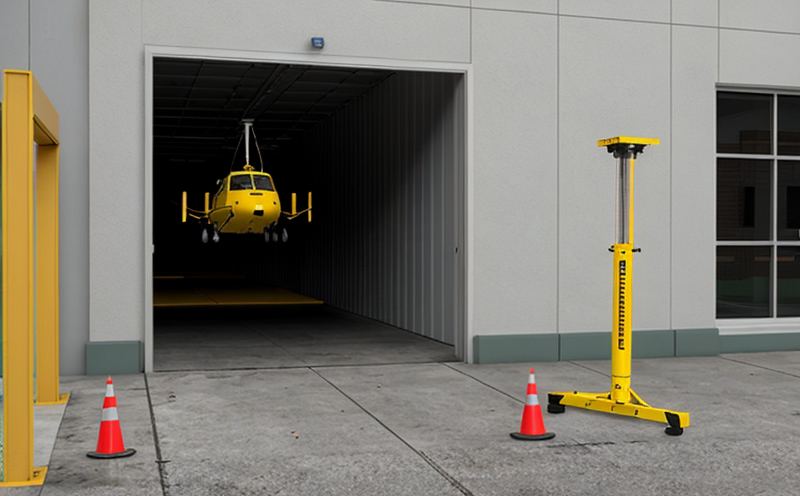Performing drop tests from specified heights to simulate real-world impact scenarios.
Unlocking Safety through Realistic Testing Why Performing Drop Tests from Specified Heights Matters
As businesses navigate the complex landscape of product development and regulatory compliance, ensuring the safety and reliability of their products has become a top priority. One essential laboratory service that plays a crucial role in achieving this goal is performing drop tests from specified heights to simulate real-world impact scenarios. This comprehensive testing approach, offered by Eurolab, enables businesses to evaluate the resilience and durability of their products under realistic conditions.
What are Drop Tests?
Drop tests involve subjecting products to controlled impacts from various heights to assess their ability to withstand crashes, falls, or other forms of mechanical stress. By simulating real-world impact scenarios, businesses can identify potential weaknesses in their products design, materials, and construction. This critical information helps manufacturers make informed decisions about product improvements, packaging modifications, and compliance with regulatory requirements.
The Importance of Drop Testing Why It Matters
In todays competitive market, companies must demonstrate a commitment to safety and quality. Drop testing is an essential step in ensuring that products meet the required standards for performance, reliability, and durability. By performing drop tests from specified heights, businesses can
Reduce the risk of product failure Identify potential weaknesses and vulnerabilities before they lead to costly recalls or reputational damage.
Enhance product design and development Inform design decisions with data-driven insights, leading to more robust and reliable products.
Comply with regulatory requirements Meet industry-specific standards for safety and performance, reducing the likelihood of non-compliance issues.
Gain a competitive edge Differentiate your business by demonstrating a commitment to rigorous testing and quality control.
Key Benefits of Drop Testing
Eurolabs drop testing services offer numerous benefits for businesses seeking to ensure the safety and reliability of their products. Some key advantages include
Improved product performance Identify areas for improvement and optimize design, materials, and construction to enhance overall product performance.
Reduced risk and liability Minimize the likelihood of product failure and associated costs by testing for vulnerabilities before they occur.
Enhanced brand reputation Demonstrate a commitment to quality and safety through rigorous testing and compliance with industry standards.
Compliance with regulations Meet regulatory requirements for specific industries, reducing the risk of non-compliance and associated penalties.
Benefits for Specific Industries
Eurolabs drop testing services cater to various industries, including
Consumer electronics Evaluate the durability of devices such as smartphones, tablets, and laptops against impacts from specified heights.
Packaging and shipping Assess packaging materials and designs to ensure they can withstand transportation-related stresses and impacts.
Automotive and aerospace Test vehicle components and aircraft parts for compliance with industry-specific standards for crashworthiness and impact resistance.
Frequently Asked Questions
What is the purpose of performing drop tests from specified heights?
Drop testing simulates real-world impact scenarios to evaluate a products ability to withstand mechanical stress, identify potential weaknesses, and inform design decisions.
How do I choose the correct height for my drop test?
Eurolab experts will work with you to select an appropriate height based on industry standards, regulatory requirements, and your specific products needs.
What information do I need to provide for a drop testing service?
To begin the process, please provide specifications about your product, including its dimensions, materials, and intended use.
Can I request customized testing protocols?
Yes! Eurolab offers tailored testing services to meet specific industry requirements or customer needs.
Conclusion
In todays fast-paced business environment, prioritizing safety and quality is essential for success. Performing drop tests from specified heights, offered by Eurolab, provides a critical tool for evaluating product resilience and durability under realistic conditions. By leveraging this laboratory service, businesses can reduce the risk of product failure, enhance design and development, comply with regulatory requirements, and gain a competitive edge in their respective markets.
Dont wait until its too late trust Eurolab to help you unlock safety through realistic testing. Contact us today to learn more about our comprehensive drop testing services!
-
Testing lighting devices for resistance to physical impact or damage.
-
Verifying the mechanical robustness of light fixtures under various impact conditions.
-
Testing lighting devices for impact resistance during shipping, handling, and installation.
-
Assessing the performance of lighting devices under accidental impact or external shock.
-
Testing the resilience of light bulbs, lamps, and light fixtures to impacts from falling objects.
-
Evaluating the effectiveness of protective covers, lenses, or casings in preventing damage.
-
Measuring the impact of external force on the integrity of LED lights and traditional bulbs.
-
Testing for damage to electrical components after impact, including circuits and connectors.
-
Assessing the impact resistance of lighting systems used in industrial or high-traffic environments.
-
Ensuring that outdoor lighting systems can withstand impacts from debris, hail, or accidents.
-
Testing the durability of recessed lighting and ceiling-mounted fixtures against impact forces.
-
Verifying compliance with relevant safety standards for impact resistance (e.g., IK rating).
-
Assessing impact resistance under extreme conditions such as construction sites or transportation.
-
Testing for any reduction in light output or fixture functionality after impact.
-
Testing whether the glass or plastic components crack or shatter upon impact.
-
Measuring the impact resistance of lighting systems in cold or freezing environments.
-
Evaluating impact resistance in emergency lighting systems or critical safety lighting.
-
Testing the reliability of impact-resistant fixtures used in public spaces like stadiums or airports.
-
Testing impact resistance for explosion-proof or hazardous location lighting fixtures.
-
Ensuring that impact-resistant lighting devices are fit for use in high-risk areas.
-
Testing how impact resistance affects the overall safety and functionality of lighting devices.
-
Evaluating the long-term effects of repeated impacts on lighting systems.




